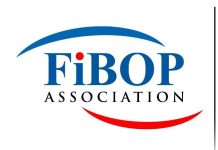…Ojikutu kicks as some FAAN-owned airports are excluded
The Nigerian Civil Aviation Authority (NCAA) in conjunction with the Nigerian Airspace Management Agency (NAMA) has reviewed directives and standing operating procedures in terms of minimum ceiling, visibility, Runway Visual Range (RVR), or specified hazards to flight for 18 airports in Nigeria.
The review is in compliance with the provision of Part 8 of the Nigerian Civil Aviation Regulations (Nig.CARs Part 8), and in accordance with International Civil Aviation Organisation (ICAO) Doc.9365.
The 18 aerodromes where the operating minima and takeoff minima has been reviewed are Lagos, Abuja, Kano, Port Harcourt, Calabar, Dutse, Eket and Enugu.
Others are Gombe, Ilorin, Kaduna, Katsina, Kebbi, Owerri, Sokoto, Uyo, Yola and Zaria.
However, the review allows for takeoff as low as 150 metres Runway Visual Range (RVR), while some airports in the country with Category Two Instrument Landing Systems (ILS Cat II) can permit landing with 300 metres RVR.
Before the review, the lowest visibility with Category Two ILS in the nation’s airports was 800 metres/550.
Based on the review, the Abuja, Lagos, Kano, Port Harcourt, Kaduna, Ilorin, Gombe, Owerri, Sokoto, Uyo, Yola, Dutse, Calabar and Enugu airports have ILS Cat II Approach and Landing Minima.
In a statement issued in Lagos, the director general of NCAA, Capt. Muhtar Usman said the agency took cognisance of improvements in visual and navigational aids in the affected airports.
He said the reviewed aerodrome operating minima would serve to enhance the operating capacity of the aerodromes. This is due to the fact that it will avail the operators with improved minima for low visibility operations.
He said the landing minima specified for all the 18 airports were determined based on applicable criteria as defined in the ICAO PANS-OPS Doc. 8168, Doc.9365. These include all relevant amendments, as well as available navigational facilities (ILS, VOR/DME, etc) or PBN Navigational Specification (RNAV/GNSS).
“On the other hand, the reviewed operating minima provided for a performance based takeoff minima for the affected aerodromes in Nigeria are determined by available visual aids for takeoff. These are runway centre lights, touchdown zone lights, runway edge lights, threshold lights, runway end lights and runway surface markings,” he said.
It would be recalled that last review of weather minima was done in 1983.
However, a semblance of revision undertaken in 1993 only stated that the takeoff minima shall be equal or greater than landing minima at all airports.
This is to allow for an air return to the same airport should there arise an emergency.
“The implementation of these revised aerodrome operating minima (both takeoff and landing) shall be based on compliance with applicable Standard Operating Procedures for Low Visibility Operations at the affected airports. This is executed by Flight Crew, Air Traffic Controllers (ATC), Aerodrome Operators and the Meteorological Agency,” said Usman.
To ensure the seamless operation of the revised minima, Usman said the Nigerian Meteorological Agency (NiMET) shall continue to ensure prompt and regular provision of required meteorological information. These will include flight visibility and Runway Visual Range (RVR) values to all ATC units in the airports.
He added that NiMET and NAMA shall ensure constant updating of the Automatic Terminal Information Service (ATIS) with the available RVR values as appropriate.
“All airlines, Aerodrome Operators and Air Navigation Service Providers (ANSP) are required to ensure adequate training of their personnel and flight crew that would be involved in low visibility operations.
“The ANSP provider is expected to ensure regular flight calibration of all available navigational aids. This is to ensure safe and efficient flight operations, especially during low visibility operations.
“The NCAA will continue to provide a proactive regulatory oversight that will ensure safety and security of all flight operations,” said Usman.
Meanwhile, the director and chief executive officer of Century Securities, Group Capt. John Ojikutu lashed out at NCAA for giving priority to some state-owned airports that record passenger traffic than some federal government-owned airports that are excluded in the review.
He said: “There they go again; when NCAA is considering airports like Uyo, Dutse, Gombe, Kebbi, etc that are not federal but state airports. What about Ibadan, Benin, Akure that are federal airports in the NCAA’s weather estimation and review and whose air and passenger traffic are much higher than the states’s traffic.”





























































